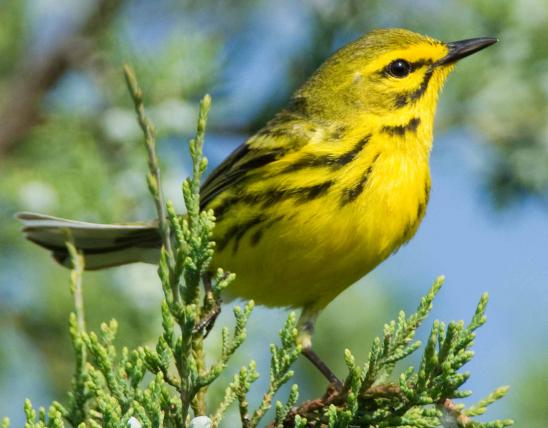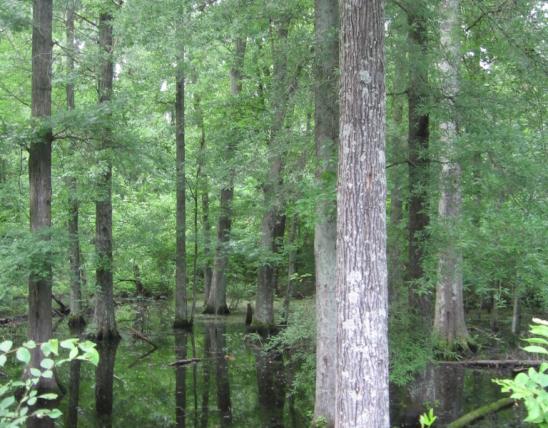
Prothonotary warbler upperparts are golden yellow, with a large dark eye and long dark bill. Wings and tail are blue-gray, with white spots in the tail. Underparts are golden yellow, with white under tail feathers. Female has the same color pattern but is yellowish with gray wings. Song is a loud ringing series: “swank-swank-swank.” Call is a sharp “tsink” or “tink.”
Length: 5½ inches (tip of bill to tip of tail).

Statewide except for the northwestern corner.
Habitat and Conservation
Forests and woodlands, usually near water. Forages in downed logs, dead standing trees and under bark in swamps and along stream banks. This bird often nests in cavities excavated by woodpeckers, but house wrens often outcompete them for these holes. Another problem is nest parasitism by brown cowbirds, which covertly lay their eggs in the warbler’s nest. Their young outcompete the warbler’s young for the parents’ food. Loss of habitat is another factor causing this species’ numbers to fall.
Food
Prothonotary warblers eat insects and other invertebrates from dead logs and trees and under bark, using their efficient, pointy, tweezerlike bills.
Status
Common summer resident.
Life Cycle
Most arrive in our state in April, and nesting begins soon after they return. This species nests in snags or hollow trees in forests near water. The opening to the cavity is filled with moss, leaves, twigs and bark. There are 4–6 eggs in a clutch, and incubation lasts 12–14 days. After hatching, the young birds fledge after 11 days.
Human Connections
Colorful and with a cheery song, warblers add greatly to our appreciation of springtime forests. It’s named after a college of Roman Catholic clerks, famous for their robes of yellow. In this regard, it’s similar to the northern cardinal, which was named for the red robes worn by Catholic cardinals.
Ecosystem Connections
These warblers are constantly hunting for insects on trees and bark. Like woodpeckers, they help to check populations of wood-eating insects that might otherwise cause great harm to our forest trees.








Where to See Species
About 350 species of birds are likely to be seen in Missouri, though nearly 400 have been recorded within our borders. Most people know a bird when they see one — it has feathers, wings, and a bill. Birds are warm-blooded, and most species can fly. Many migrate hundreds or thousands of miles. Birds lay hard-shelled eggs (often in a nest), and the parents care for the young. Many communicate with songs and calls.





























